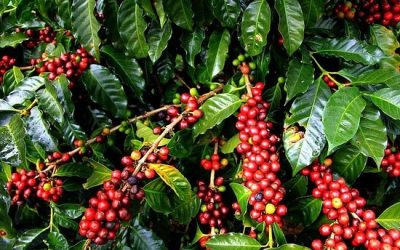Unlocking Sustainable Agriculture – Regenerative Agriculture
Embracing regenerative agriculture goes beyond surface-level practices. It is more than sporadic tree planting or reliance on biofertilizers, as many farmers claim. A true commitment to regenerative agriculture demands a holistic, multi-dimensional approach to counteract the escalating challenges posed by rising temperatures, droughts, and floods that have become increasingly prevalent in recent years. In our pursuit of resilient soils, the first crucial step is to significantly reduce the use of inorganic fertilizers. Within a span of 2-3 years, we commit to halving our reliance on these chemicals, a pivotal move towards sustainable and environmentally friendly farming practices. This reduction not only lessens the ecological footprint but also ensures the long-term health of the soil, fostering a balanced ecosystem for future generations. Transitioning away From Harmful Chemicals Transitioning away from harmful chemicals is an imperative aspect of regenerative agriculture. Glyphosates, commonly used as herbicides, have detrimental effects on soil health and overall biodiversity. Instead, we champion the abandonment of glyphosates and advocate for weed slashing. This natural approach to managing weeds not only eliminates the need for harmful chemicals but also contributes to the cultivation of a healthier and more vibrant farming environment. Mulching, another critical practice in regenerative agriculture, takes precedence in our holistic approach. Bare fields are prioritized for the application of a substantial 6-inch layer of mulch. This layer serves as a protective barrier, fostering soil health by retaining moisture and enhancing nutrient content. The practice of mulching not only contributes to sustainable soil management but also plays a crucial role in mitigating the impact of climate change by reducing soil erosion. Strategic tree planting around coffee plots is a significant component of our regenerative agriculture model. Trees such as Neem or Tephrosia are chosen for their repellent and insecticidal properties. These trees act as natural guardians, protecting the coffee plants from pests while contributing to the overall biodiversity of the farm. This approach aligns with our commitment to fostering a balanced and resilient ecosystem within our agricultural practices. Integrated pest and disease management takes center stage in our regenerative agriculture strategy. By encouraging this holistic approach, we aim to promote the presence of beneficial predators like ladybirds, insects, and birds in our farms. This natural balance not only controls pests but also enhances the overall health of the ecosystem. It’s a step towards harmonizing the relationship between farming and the surrounding environment. Diverse Cover Crops Diverse cover crops play a pivotal role in elevating organic matter within the soil. These cover crops, when harvested and left to decompose, become a source of nutrients for essential microorganisms like Fungi, Trichoderma, and Bacillus. This diversity is not just about crop variety; it’s about creating a rich, dynamic environment within the soil that supports and enhances the natural processes crucial for sustainable agriculture. The ultimate goal of regenerative agriculture is to build resilient soils capable of fighting diseases and pests independently. Creating a microclimate within coffee plots, characterized by high levels of organic matter, helps the soil hold more humidity. This microclimate aids in effective carbon sequestration, contributing to climate change mitigation. By prioritizing soil health, we aim to create an environment where the soil itself becomes a robust source of nutrients, promoting the well-being of crops and ensuring long-term sustainability. Understanding that healthy soils form the foundation of healthy food and a better environment, our practices align with the broader goal of promoting sustainable and regenerative agriculture. By adopting these holistic measures, we not only fortify our soils but also contribute to a healthier, more resilient farming ecosystem that benefits both present and future generations. Conclusion In conclusion, true regenerative agriculture is a complex and comprehensive strategy. By embracing these practices, we embark on a journey towards a sustainable and harmonious relationship between agriculture and the environment, paving the way for a brighter and more resilient future. Editor: Simon KairuFor Agricultural Consultancy services contact us via: Click Here
